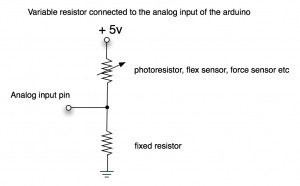Max patch for circulating through 5 LEDs
<pre><code> ———-begin_max5_patcher———- 1377.3oc2Z9zbhaCFF+L7oPimdLMw5u1du0YZu068P6N6X.Eh1AjYrEoa6Na +rWKIaVXIDjksUb3PvAiQ9QO7999SRVec9rnEEegWEA9.3OAyl804ylYNk9D yZd+rns4eY4l7JykEsrX6VtTEcm8yT7unLm+2+sesBrrPJ4KU7U.UAfB1IjU sW3iERUk3e45KFhtOt4z6xUKeRHW+ox5umUGXVx8z6.TRZ8UAfTp9.J99XvG a9Rx8aExMbkQQvlSJVYzQwhO+yL1w2UY9VycM5WJE4ah9daTrW01HGjSIupt 2kqDExikTRrVDMRJt4EvG0eouMet9k65o+st3+5tUASXZqBC0Jhf6tQQGZih xLFEbz7I09RInPxAaDqeRU+e2A9Ko5ItDX9DQ8od7QfPBfwwaOD8sQTGWVrW ZZCTm84j3LceAiONjDS6hSS5rS6goU2BK3kssmswT+yNtsWDIz9IHZQtbczA k6tKfxP1r.yqwmEssKurteo3kehKyWrgeb7xU8GTW8GjG9yVdUU9Z9YAUwWz x7wmfPiCgSsGP5TTX5kBVPmaFzNmVB8IXg+202ry7hU7M5bmK5H9F8z5JD1E BetpqvBgqboPD3vFhXAJMET7IDIIDlwh8JUgzwPgWpaZAlnzr1es6HfhlNbc FUw50a3uZwQG5KDKrEMrk+nYieD7C3GVIVKT4a9iRghC9oANjtweXVFYrwf5 TLMK9sLAeXY.HLqeL.R1MHCn0U7mADe6v.ZFNUOX.v2CL.jE00CF.Zxv.Z5K iDC.G.F.LYTg.sFTKDf0YH.kb6.AvzzdBAv2fPfVWwaH.gb6.AHMyJxaH.g9 d.BfsrN+g.D1jABzzWFGH.IIDPfzQEBzZP9CAHo2NP.RZb+f.3tOU+WeQZOU Q8ZUZCL5nU4diNvoijWZUTu7xv.bnMSAyafCNafsvSUTurv9honVZbOvTw9Y Ambe6kEzS3ViRFI3FrOtSilFkbrGfYiJRrsKzCjHZnS6NQRihqNrfTVLpmfT 1PagYYuSAosdo+fT5sybvXMSH0ejH48vbvXVNq+vMrekuwD6N3fhFqrjJcVB .Av.Bf95FzcW+nWq6UC.GZ71Tytx3xdK6buE047I1awyyy9r+goLOCgPjIyz 3aRGFmQ5fPdkpbHEk8VONPXpoXHKdDLG3.9PcG4c7Bp4oXhGgs7BjEhs7xEJ YVK5xh59xH7L9rkBgwIl.HZmGZA7Mc4ce.EOpyDnsri+yD.BG3gw1HILZz.z lsdGurFRSuVpZ6emTfp6QeDygjqrkHouv7r5p4RFxfu06ECZzVlsvEz6Q1F9 m+zy4kGtQ0W1dgr37pWmd9gY+qfMkpnI1M4H60ibvuPdYe7JycwrMU+gcisQ o5yepAVUrubYa2scCTB9tXWwqTBoIS+nKRWZsNIr8hdRrZEWdLyZknRiwVc4 Mfpq5QOf15Aj+55QubYGI5QWOnqoGVX0C7J5ghBqdtV7id63EH8vhcIdNXxQ usDlPxgjNsjCZRIGHbZE6j4fbXgqTH0oT8rvomjIldXtnGZ3ziKI6T1DSOIg SOtT8gBmX5If46tfRIAL+xkxy5cCYnnWYSK87C2pKnGR37GWpOSB2PCIt3Oj vU+gPmX5wkwpRBX9kK7TBYhomvw2ItTeFmMwzS3x2wtLdCb3xuvtvKHga7F3 jokdHtv2IAboMbZ1oA72KWp+fBm+fISL83BOEGt46fcIdFSmX5gD1kNjbM8D vk+wo7q.x2cQNg6mKXpqOofoi8.CW1NzoQOGtj8QboLsOzo7c6dlWV0zjFgD sM+yEkG1pRQaER6aMsXTI+YQ60imqasuM++QWPlmi ———–end_max5_patcher———– </code></pre>



